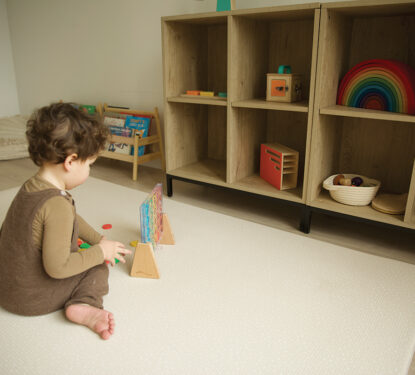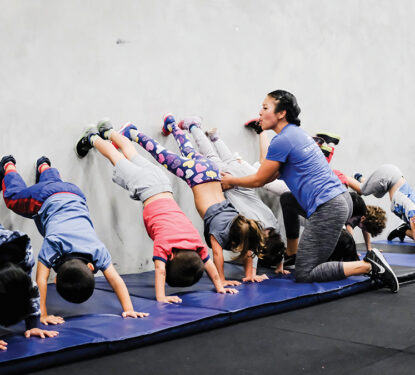
In our family, mental health is just as important as physical health. Conversations around our feelings, how we experience them, and how to express them through words and movement, is the norm in our household.
Take, for example, the dreaded tantrum. Whether it’s a toddler, teenager, or an adult having a full-blown meltdown (holiday stress can bring it out of anyone), a temper tantrum is simply a build-up of emotions that just needs to be acknowledged and released. As a grown- up, I can regulate my emotions by practising breathwork and meditation, journaling, or doing some endorphin-releasing exercises, like yoga or hiking with my dog. This also helps me to stay calm as a parent, so I can hold a safe space for my family’s emotions.
Children, however, will need their own kid-friendly strategies and resources. I find that using the five bodily senses helps kids to ground in the present, and start learning how to self- regulate their emotions. Here are three ways we practice this in our home when a tantrum looms on the horizon:
See: Use visual aids

Visual resources have helped my children to navigate naming their emotions as they develop, helping both me and them understand their needs better. This can include storybooks about emotions that they can grab off the shelf, a mood chart on the wall, or flashcards that describe their internal state.
Hear: Record your own affirmations or meditations
My son and I recorded ourselves on phone repeating his chosen affirmations: “I am strong”, “I am gentle”, “I am helpful”, and “I am safe”. He uses the audio to ground himself, and self-regulate before an explosion happens.
Touch: Give them a tight hug
Sometimes all our kids need is a comforting squeeze to let them know they are loved. Not only does it send a message that everything is OK, it releases feel-good hormones, like oxytocin and dopamine, which naturally calm the nervous system down. Consent is important here though; remember to always ask first, or just gently remind them: “I’m here when you are ready for a hug.”
Read more: How To Talk To Your Kids About Healthy Body Image







